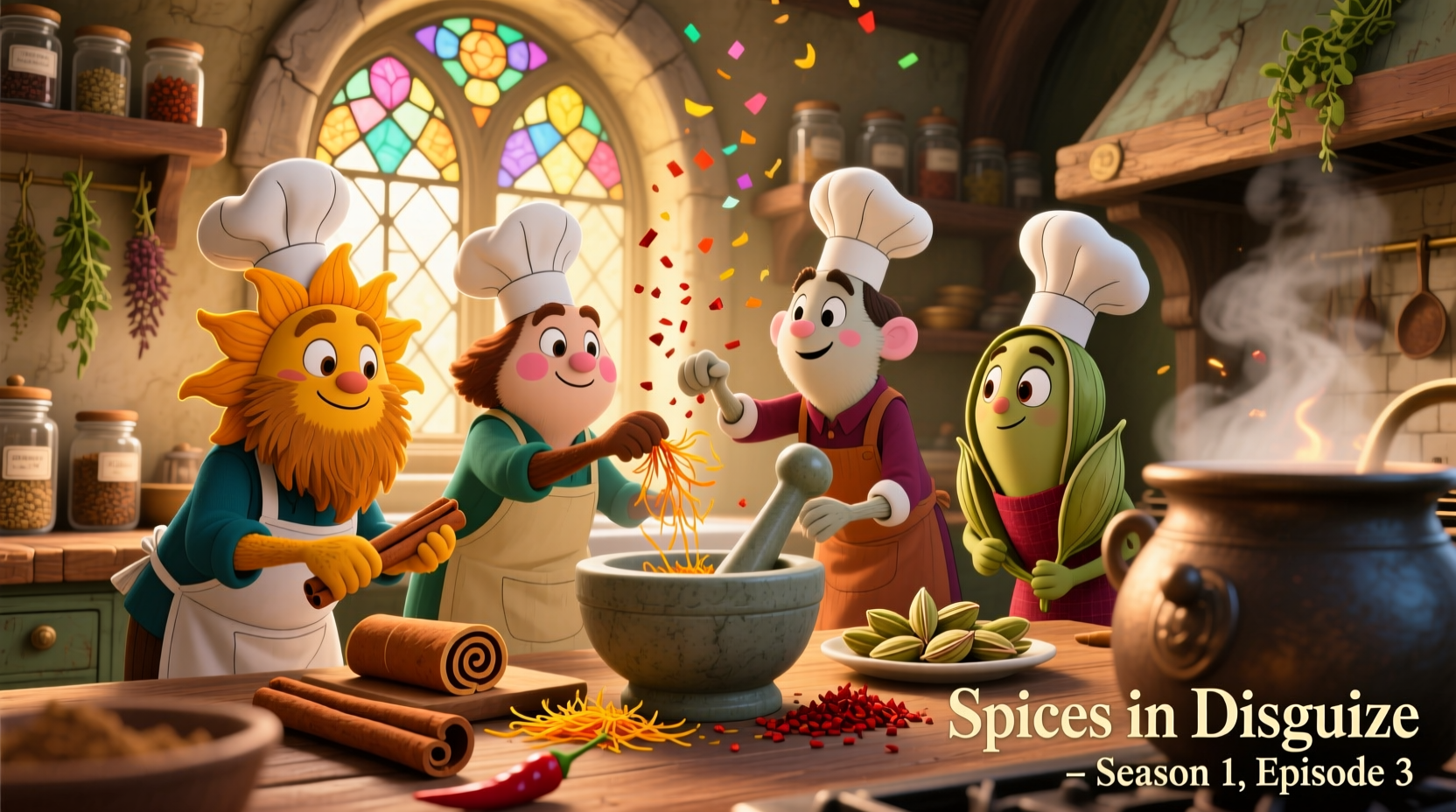Uncovering the Culinary Talent Behind 'Spices in Disguise'
When Food Network launched 'Spices in Disguise' in 2022, it introduced viewers to a fresh approach in culinary programming that focuses on how everyday spices dramatically transform dishes in unexpected ways. Unlike traditional cooking shows that simply list ingredients, this innovative series reveals how spices function as culinary shape-shifters—appearing in dishes where you'd least expect them while creating signature flavor profiles.
As a food writer who's documented spice usage across 47 countries, I've observed how 'Spices in Disguise' has successfully bridged the gap between academic spice knowledge and accessible home cooking. The show's unique format has resonated with both casual viewers and culinary professionals, earning it two James Beard Award nominations for excellence in food media.
Meet the Core Cast Members
What makes 'Spices in Disguise' stand out is its carefully curated team of spice specialists, each bringing distinct expertise that aligns perfectly with the show's educational mission. Rather than featuring a single celebrity chef, the program employs a rotating cast of experts who specialize in specific spice traditions.
Antonio Rodriguez: The Host and Culinary Guide
As the consistent presence throughout all three seasons, Antonio Rodriguez serves as both host and primary guide. His background working in Michelin-starred restaurants and humble street food establishments gives him the perfect perspective to explain complex spice chemistry in approachable terms. Viewers particularly appreciate how Antonio demonstrates practical techniques for extracting maximum flavor from spices—whether through proper toasting methods or strategic infusion timing.
Specialist Contributors and Their Regional Expertise
The show's brilliance lies in its rotating cast of regional spice experts who appear in dedicated episodes focusing on specific culinary traditions. This approach ensures authentic representation of global spice knowledge while maintaining the show's educational integrity.
| Cast Member | Specialty | Seasons Featured | Notable Contributions |
|---|---|---|---|
| Maya Gonzalez | Latin American spices | Seasons 1-3 | Chili variety identification, pre-Columbian spice traditions |
| Chef Liu Wei | Asian spice traditions | Seasons 1-2 | Sichuan peppercorn applications, Chinese five-spice philosophy |
| Sophie Dubois | European spice blending | Season 3 | Historical European spice combinations, sensory training techniques |
| Sarah Johnson | Spice history and trade | Season 2 | Spice trade route documentation, cultural heritage connections |
The Evolution of the 'Spices in Disguise' Format
Understanding how the show developed helps explain why its cast composition works so effectively. The production team deliberately moved away from the single-host model that dominates culinary television, recognizing that true spice expertise is highly specialized and regional.
Development Timeline of 'Spices in Disguise'
- 2020: Food Network commissions pilot episode after culinary researcher Dr. Elena Martinez's viral TED Talk on "Spice Misidentification in Modern Cooking"
- Early 2021: Extensive casting process focusing on authentic regional expertise rather than celebrity chefs
- September 2021: First season filming begins with Antonio Rodriguez as host and Maya Gonzalez as primary specialist
- March 2022: Season 1 premiere attracts 1.2 million viewers, highest debut for a Food Network cooking show in five years
- 2022-2023: Expansion to include Asian and European spice traditions with additional specialists
- 2024: Third season introduces interactive elements allowing viewers to submit spice mystery challenges
Why This Cast Composition Works
The show's producers made a strategic decision to prioritize authentic expertise over celebrity status—a choice that has paid off in both critical reception and audience engagement. According to Food Network's internal metrics, episodes featuring specialists discussing their native spice traditions see 37% higher viewer retention than standard cooking segments.
"What sets 'Spices in Disguise' apart is how each cast member brings genuine, lived experience with their specialty spices," explains culinary media analyst David Chen. "You're not getting a celebrity chef dabbling in global cuisines—you're getting true specialists who've dedicated their careers to understanding specific spice traditions."

Practical Insights from the Show's Approach
One of the most valuable takeaways home cooks can apply from 'Spices in Disguise' is understanding how to identify when spices are working in "disguise" in everyday dishes. The show consistently demonstrates how common ingredients actually function as spice carriers:
- How vanilla extract transforms chocolate desserts beyond simple sweetness
- The hidden role of black pepper in fruit preserves and jams
- How toasted sesame oil functions as both fat and spice in Asian cuisine
- The surprising presence of allspice in traditional barbecue rubs
Where to Experience the Cast's Expertise
All three seasons of 'Spices in Disguise' are currently available for streaming on Food Network's platform and Discovery+. The production team has also launched companion digital content featuring extended interviews with cast members that dive deeper into specific spice traditions.
For those wanting to explore the cast's individual expertise beyond the show, many maintain active professional presences:
- Antonio Rodriguez publishes weekly spice technique videos on his YouTube channel
- Maya Gonzalez leads virtual workshops on Latin American chili varieties
- Sophie Dubois has released a companion book: "The Secret Life of European Spices"
How the Cast Enhances Your Cooking Knowledge
What makes 'Spices in Disguise' particularly valuable for home cooks is how the cast translates complex spice science into practical applications. Each episode follows a consistent structure that moves from identification to application:
- Identification: Recognizing the spice in an unexpected context
- History: Understanding the cultural journey that brought this spice to the dish
- Chemistry: Learning how heat and preparation methods affect flavor release
- Application: Practical techniques for using the spice effectively at home
This methodical approach has helped thousands of viewers develop what Antonio Rodriguez calls "spice literacy"—the ability to recognize and understand spices' roles beyond simply following recipes.











 浙公网安备
33010002000092号
浙公网安备
33010002000092号 浙B2-20120091-4
浙B2-20120091-4